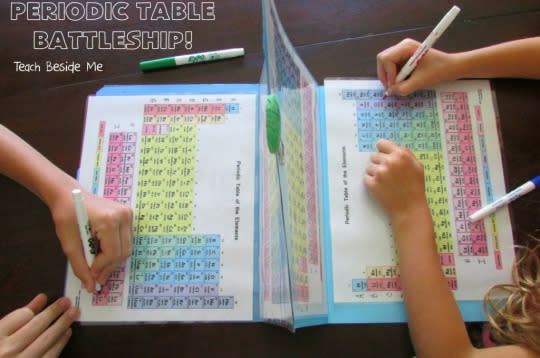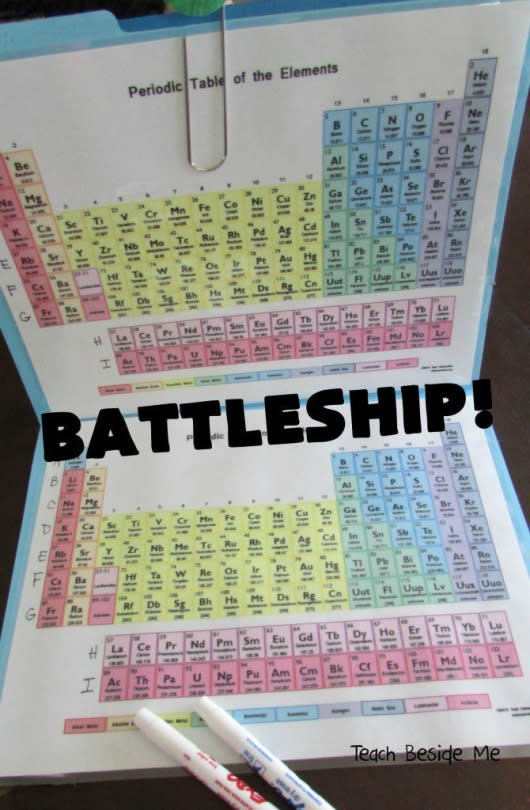“You Just Sunk My Copernicium!” Playing Periodic Table Battleship
By Gareth Branwyn

Many of you will likely remember playing the tabletop game Battleship as a kid. Karyn Tripp, who runs the homeschooling education site, Teach Beside Me, used the basic format of the classic game to create a teaching aid for the Periodic Table of Elements. Here’s Karyn explaining how to make the game and how to play it:
How to Make a Periodic Table Battleship Game
To make the game, print out 4 copies of the Periodic Table. I like the colored ones, but it isn’t necessary. I found a great one from Science Notes. Then, along the left side of the table, I labeled the rows alphabetically. They already have row numbers. I laminated mine to make it re-usable. We used two file folders and hooked them together at the top with a jumbo paperclip. Attach two of the periodic tables in with that paper clip as well. Then lay the other two periodic tables down on the table in the folder.

How to Play Periodic Table Battleship
The kids can then mark where they want to place their ships by circling rows of 2, 3, 4, and 5 elements on the lower table. They play by calling out coordinates. If they miss, they put an X on the spot they chose on the upper table. If they get a hit, they circle it. They can continue playing until one person sinks all of another person’s ships.
Karyn has gotten an enthusiastic response to her idea, but commenters who are chemistry teachers have taken exception to the alphabetical lettering of the rows and have made suggestions such as the following:
I am a chemistry teacher. Neat Idea, but please don’t use letters on the side. The Periodic Table is numbered on the rows, too. Just put those numbers (1,2,3,4, etc) if they are not there, remembering that the bottom two rows are actually embedded in rows 5 and 6 where the arrows pull them down to spread them out. The numbers at the top should be 1A, 2A, 1B, 3B, etc. To get your students to learn the periodic table, don’t just sink ships, eliminate groups. Have students select one element in each group (they are labelled by color on the PT itself). Students can call them by element symbol to start but they can also use location “2-1A” or atomic number or mass number. If you get a more sophisticated PT, it will have the melting point and a lot of other properties as well.
You can see Karyn’s original post here, and if you’re a homeschooling parent, be sure to check out some of her other teaching materials and aids.
More from Make:
Casting Your Own Dungeons for Role-Playing Gaming
How to Check the Balance of Your Gaming Dice
5 Fantastic Tabletop Gaming Props You Can Print
